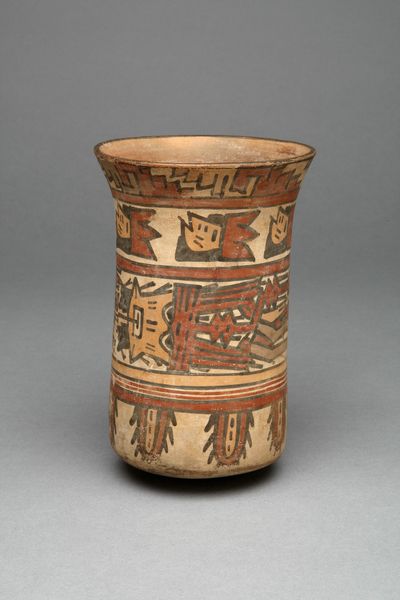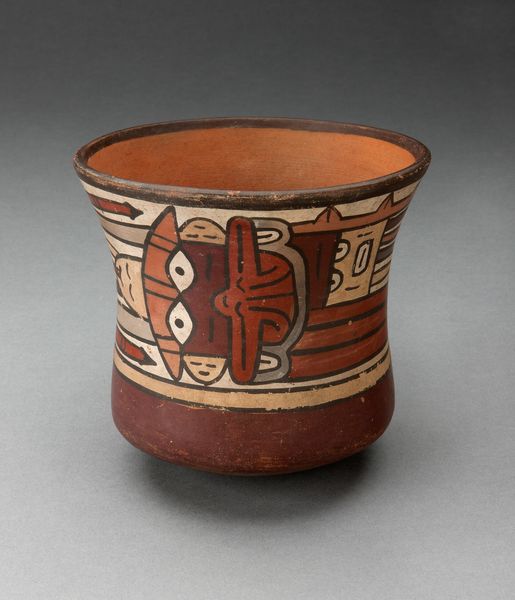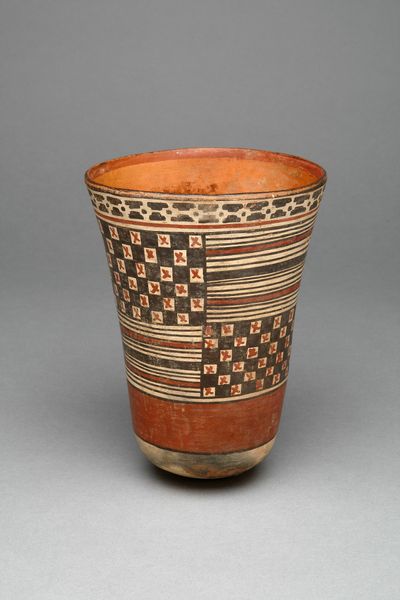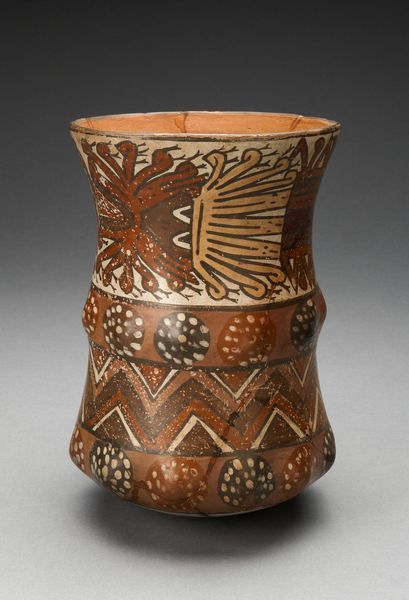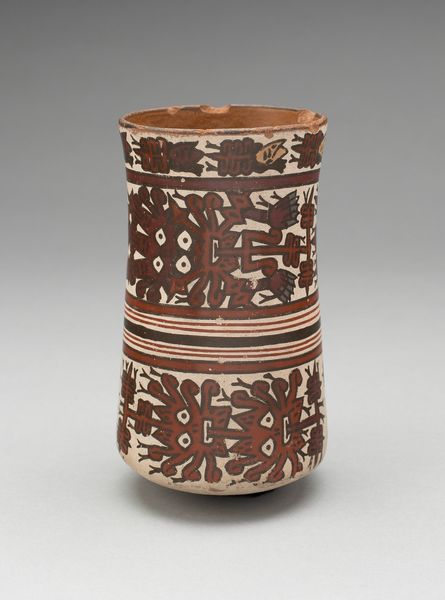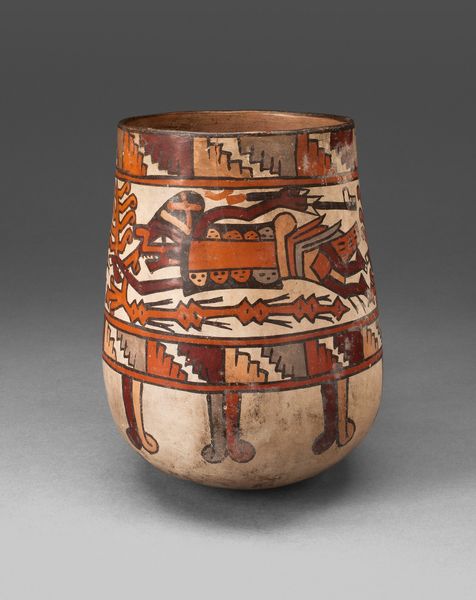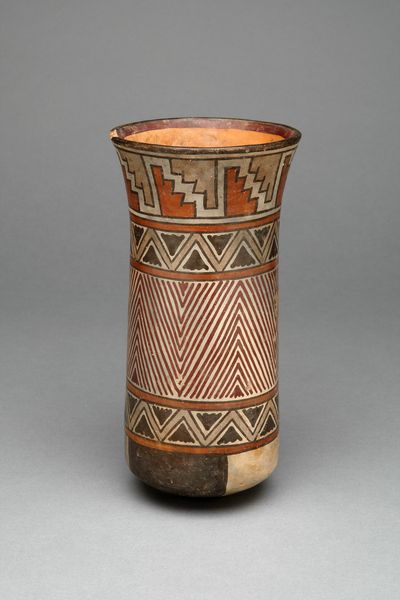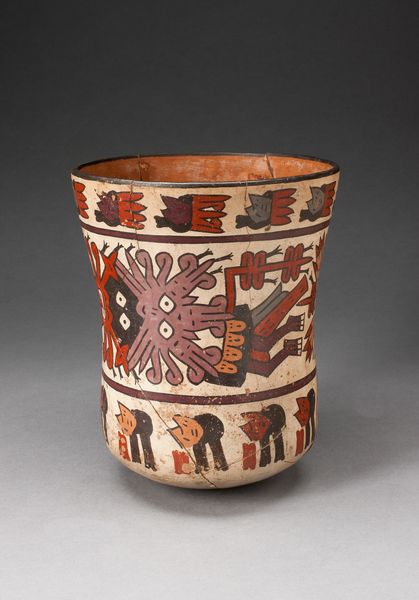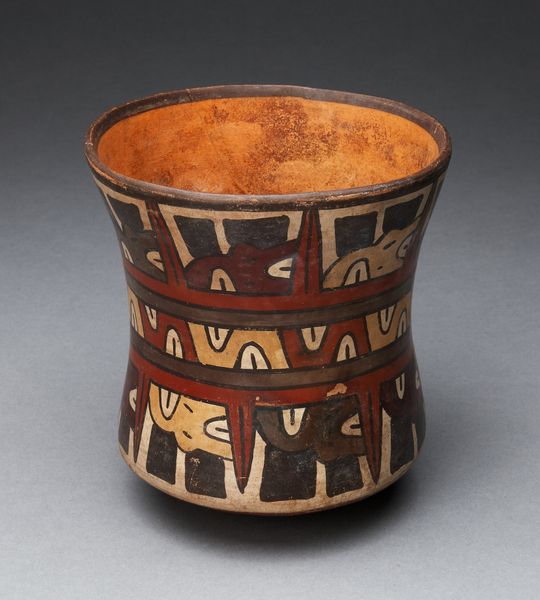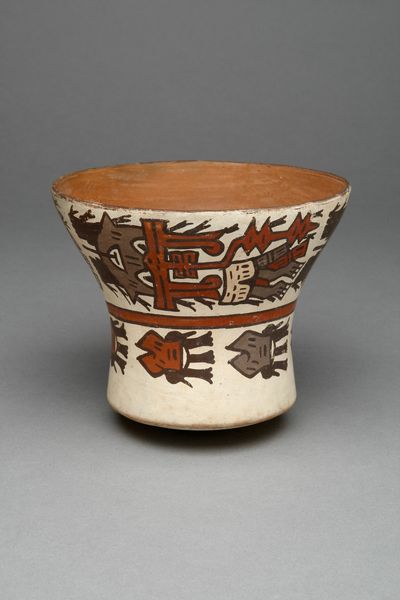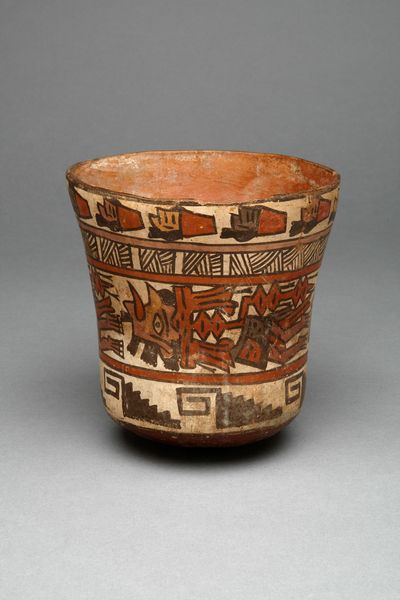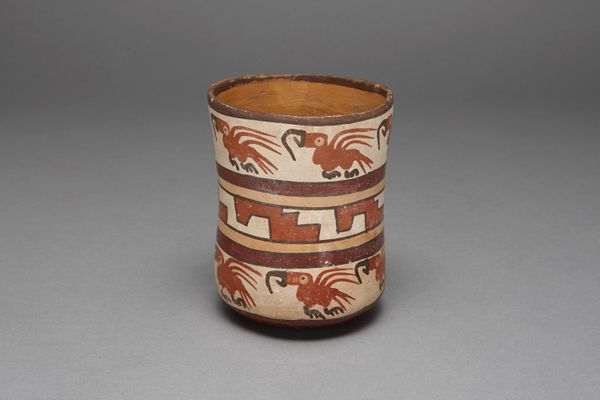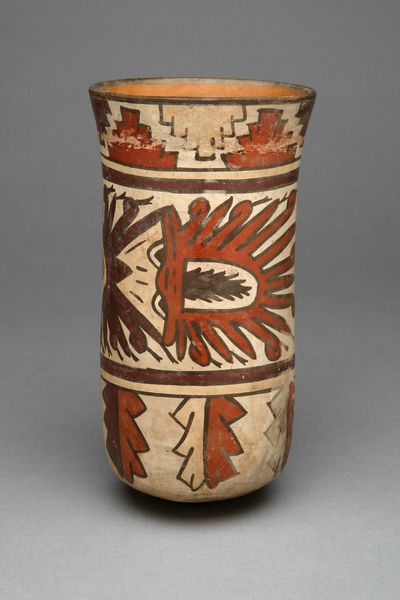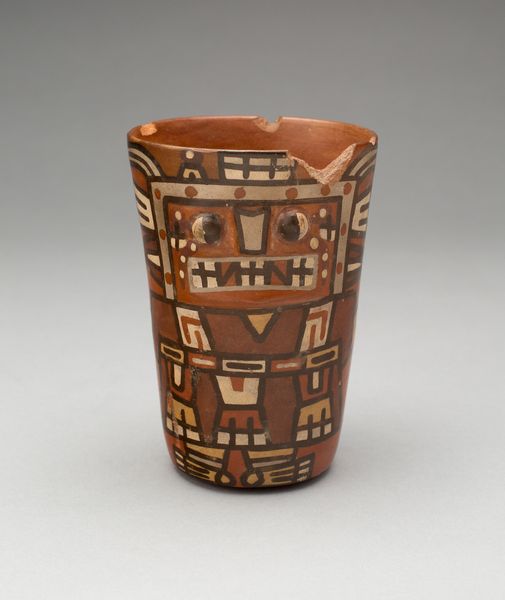
Beaker Depicting a Decapitated Head Wearing an Intricate Headdress c. 180 - 500
0:00
0:00
ceramic, terracotta
#
ceramic
#
figuration
#
geometric
#
ceramic
#
terracotta
#
indigenous-americas
Dimensions: 16.8 × 11 cm (6 5/8 × 4 5/16 in.)
Copyright: Public Domain
This beaker, crafted by the Nazca people, presents a vivid image of a decapitated head adorned with an elaborate headdress. Within the Nazca culture, such images were not mere depictions of violence but powerful symbols associated with fertility and renewal. The motif of the severed head appears in various cultures across time and space. Think of the Celtic cult of the head, where the head was revered as the seat of the soul, or the trophy heads displayed in ancient Mesoamerica. The Nazca's use of this imagery likely carried a similar significance, perhaps linked to agricultural cycles and the promise of new life emerging from sacrifice. Consider how this motif, charged with the primal energies of life and death, evokes deep-seated emotions tied to our understanding of mortality and regeneration, echoing through cultural memory. The symbolic weight of the decapitated head resonates with a profound psychological force, engaging viewers on a subconscious level with themes of power, sacrifice, and transformation. It is a potent reminder of how symbols evolve, resurface, and transform across time.
Comments
No comments
Be the first to comment and join the conversation on the ultimate creative platform.
